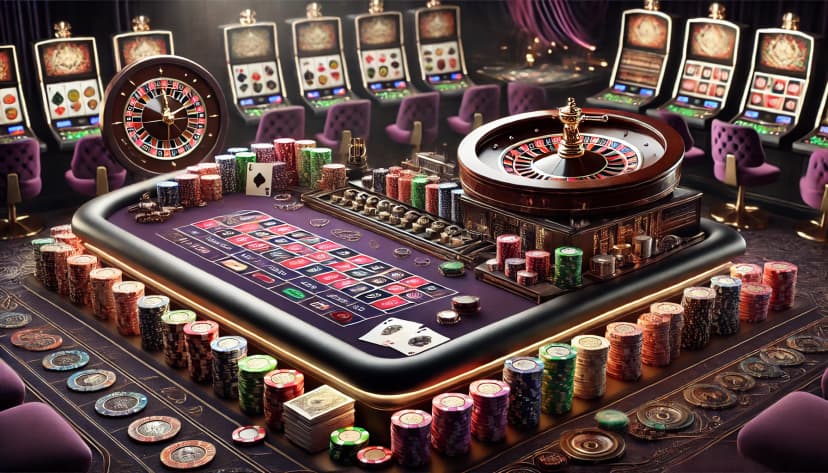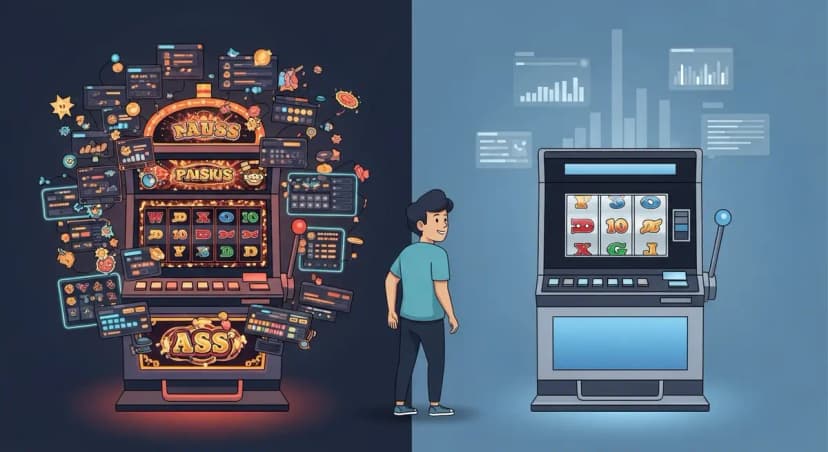How Casinos Build Player Attachment Through Design and Storytelling

Some casino games feel instantly addictive — not just because of their rewards, but because they connect. From immersive visuals to recurring storylines, design and storytelling transform casual play into emotional engagement. In today’s online casinos, attachment isn’t built by luck; it’s engineered through psychology, design consistency, and narrative depth.
This guide examines how visual design and storytelling are utilized to foster stronger relationships with players — the kind that lead to longer sessions, repeat visits, and higher lifetime value.
Understanding Player Attachment
Player attachment is the emotional connection that keeps users coming back even when they’re not actively winning. It’s different from simple retention. Retention tracks whether a player returns; attachment explains why they return.
Research within iGaming design reveals that when a player feels emotionally invested in a game’s world, their engagement levels can increase by 25–35%, even without significant monetary incentives. In essence, attachment transforms gambling into a more personalized entertainment experience.
| Term | Definition | Outcome |
|---|---|---|
| Engagement | Frequency of interaction with a game or platform | Increased session length |
| Retention | Returning to play after time away | Higher DAU/MAU ratios |
| Attachment | Emotional and psychological connection | Loyalty and brand affinity |
Design: The Foundation of Player Emotion
Good design goes far beyond looks — it’s the language that casinos use to communicate trust, excitement, and anticipation. The best-performing iGaming titles utilize subtle visual cues and interface logic to influence players' emotions while they play.
Color and Emotion
Colors carry meaning. Reds and golds signal luck, urgency, and success, while blues and purples imply security and sophistication. A study published in the Journal of Behavioral Design found that warm color palettes can increase playtime by up to 18% by simply enhancing emotional arousal.
Sound and Sensory Reinforcement
Casino audio design has evolved into a science. Winning sounds are short, upbeat, and harmonically consonant, triggering dopamine spikes. Even ambient background loops are tuned to maintain focus without fatigue. When synchronized with visuals, these cues make every reward feel more substantial and satisfying.
Interface Flow and Ease of Use
The longer a player has to think, the less immersed they become. Modern UX design in casinos aims for what’s known as “flow frictionless play.” Every transition—from game launch to spin—is optimized for speed and clarity. Micro-delays are minimized, while feedback animations confirm every action instantly.
A smooth user interface conveys trust and maintains emotional engagement consistently throughout a session.
Storytelling: The Invisible Engine of Immersion
Storytelling is what transforms a slot into an experience. When players identify with characters or narratives, they stop chasing wins — they start chasing progress.
From Spin to Story
Games like Book of Dead or Gonzo’s Quest succeed because they connect gameplay with adventure. Players follow a hero, explore a world, or collect relics — each win or loss contributes to a broader story arc. This approach satisfies both the rational and emotional aspects of engagement: skill, progress, and a sense of belonging.
Narrative Design and Structure
Strong casino narratives follow the same three-act structure as traditional storytelling: setup, challenge, and reward.
In iGaming terms, that translates to:
| Story Stage | In-Game Parallel | Player Impact |
|---|---|---|
| Introduction | Themed environment and tutorial stage | Curiosity and orientation |
| Conflict | Progressive difficulty, quests, or collection challenges | Sustained engagement |
| Resolution | Bonus rounds, character milestones, or special endings | Emotional satisfaction and retention |
Players who feel they’re part of a larger narrative loop experience a stronger sense of completion — a psychological reward that’s just as powerful as monetary wins.
Emotional Design and the Psychology of Loyalty
The most successful casino platforms are built around emotion first. Everything from pacing to iconography reinforces familiarity and trust.
- Anticipation Loops: Short intervals between action and outcome keep the brain in a constant state of readiness.
- Variable Rewards: Unpredictable bonuses trigger dopamine surges and encourage replay behavior.
- Consistent Themes: Players recognize a visual “brand identity,” which builds comfort and confidence across different games.
When emotional design aligns with storytelling, players begin to associate positive moods with specific casinos or developers. That’s brand loyalty at its deepest level.
Cross-Platform Consistency: The Attachment Multiplier
Modern players seamlessly transition between mobile, tablet, and desktop devices without a second thought. Casinos that maintain consistent design language and state synchronization across devices create what’s known as attachment continuity — the sense that your world follows you wherever you go.
Responsive design, synchronized progress, and identical sound palettes reinforce a stable emotional environment. Data shows that players who experience full cross-device consistency log 40% longer average weekly playtime than those who don’t.
Building an Attachment Framework
Operators aiming to strengthen attachment should measure and iterate across three key pillars:
| Pillar | Design Focus | Measurement KPI |
|---|---|---|
| Emotion | Color, sound, feedback pacing | Session satisfaction, NPS |
| Progress | Quests, achievements, world-building | Retention curve, quest completion rates |
| Continuity | Cross-device UX, brand consistency | Average session frequency, LTV |
Integrating analytics into narrative and design development enables continuous optimization — turning creativity into a measurable retention engine.
Responsible Design Considerations
Emotionally powerful games carry ethical responsibilities. Overstimulation or manipulative reward loops can harm trust and violate responsible gaming standards.
Responsible operators balance engagement with transparency by:
- Disclosing volatility and win frequency clearly
- Offering adjustable game speeds and voluntary cool-off timers
- Maintaining clear boundaries between narrative immersion and financial risk
This approach sustains both the brand's reputation and the long-term well-being of the player.
Conclusion
Design and storytelling are not surface embellishments — they’re the psychological infrastructure of player loyalty. Through emotional design, narrative depth, and consistent cross-platform experiences, online casinos are building more than games; they’re building worlds players want to belong to.
When executed responsibly, these worlds keep players returning not for luck, but for the feeling of being part of something designed, familiar, and emotionally rewarding.
FAQ
Why do online casinos invest so heavily in design and storytelling?
Online casinos invest in high-quality design and storytelling because these elements directly influence how players feel and behave while gaming. A strong visual identity fosters trust and familiarity, while well-crafted narratives add emotional depth, encouraging longer play sessions. When combined, design and storytelling transform gaming into a memorable experience rather than a transactional activity, leading to higher engagement and brand loyalty.
How does storytelling affect player engagement in casino games?
Storytelling turns gameplay into an experience with purpose. Instead of isolated spins or bets, players become part of a narrative journey with characters, missions, and progression. This structure satisfies both emotional and psychological needs—offering a sense of achievement, anticipation, and belonging. As players return to see how their story evolves, engagement naturally deepens over time.
What design elements have the biggest impact on player attachment?
The most influential design elements are color, sound, and pacing. Colors shape emotion, with warm tones creating excitement and cooler tones conveying trust. Sound reinforces rewards and builds anticipation, while pacing ensures continuous flow without fatigue. When these components align within a consistent interface, players experience what designers call emotional continuity—the seamless, immersive feeling that keeps them engaged and playing.
Do narrative-driven games really improve casino retention rates?
Yes, narrative-driven games consistently outperform non-narrative formats in both engagement and retention. Studies in iGaming analytics reveal that story-based games can achieve retention rates 25–35 percent higher than those of standard titles. By connecting gameplay to a broader story arc, players develop an emotional investment that extends beyond financial outcomes, encouraging them to return and complete missions or unlock new chapters.
How can operators measure emotional attachment in their design?
Emotional attachment is best measured through behavioral data rather than direct feedback. Operators examine metrics such as session frequency, average playtime, completion of quests or achievements, and consistency across devices. When these indicators rise together, they reflect genuine attachment—a sign that players identify with the brand and enjoy being part of its world.
Is emotional game design ethical?
Emotional design can be entirely ethical when applied transparently and responsibly. Its goal should be to enhance enjoyment, not exploitation. Ethical operators use design to create positive emotional experiences while maintaining clear communication, fair odds, and responsible gaming tools. When done right, emotional design fosters satisfaction and trust instead of dependency.
What’s the future of storytelling in online casino design?
The future lies in personalization. Advances in AI and data analytics will enable stories to adapt to individual players, changing environments, challenges, and rewards based on their personal play history. This evolution will make casino experiences more dynamic and engaging, blurring the line between entertainment and interactivity while maintaining responsible gaming standards.










